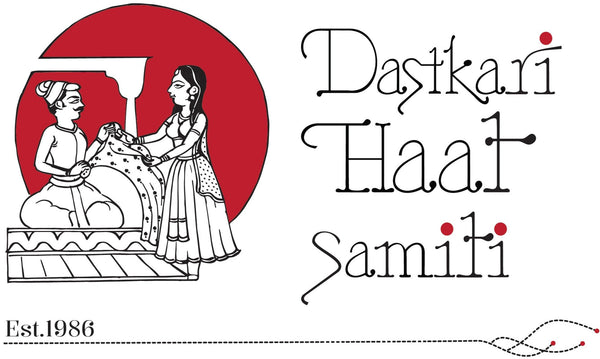The current sparks on social media are not just a frothy tussle between some elite persons considered protectors of craftspeople daring to come up against Sabyasachi Mukherjee of the flashiest and successful names in the fashion business. It is a genuine and much larger challenge for the world of the handmade. On one side are the values that are important for our cultural heritage which are about community sharing and retaining pride in our diverse identities and skills. It is about a lifelong riyaaz to improve one's skills and designs. The craftsperson can create, innovate and co-operate with modernity very easily. Their immense value is that their workmanship incorporates specific cultural histories and stories special to each place and skill. They are our living treasures who need support, opportunity and need to be prioritized to sustain their existing and very precious livelihoods. On the other side is poised the new ‘market monster’ that makes it alright to swallow up these old ways for the sake of fame and profit. Jeff Bezoz can harshly exploit his workers and then have the gall to thank millions of Amazon customers all across the world for funding his multi-billion dollar dream trip into space for 5 minutes. It is an unequal battle. A passing acknowledgement by our designer to hybrid craft forms is similar.
When it was proudly announced that marketing lines had crashed due to the success of H&M’s tie up with Sabyasachi for a new line, who would not have rejoiced that Indian designers had conquered the world. We had been proud of the typical Indianness of his designs in the Bengal patina, as we proudly acknowledged Ritu Kumar’s contribution to hand embroidery and hand block prints, when other designers were running the western way. But reading the Sabyasachi statement further, it was a Sanganeri block print digitized that caught the eye of those who have dedicated their lives to ensure its neglected and often starving practitioners gained respect , recognition and remuneration.
One wonders if Sabyasachi knows what's been going on in the real Sanganer. It is a small edge-of-town kind of colony outside Jaipur surrounded by garbage and sewage. The block printers there have been struggling to have clean water, and then to stay there instead of being summarily relocated to some unknown and unfamiliar area by the Pollution Control Board. Hand block printing employs wood carvers and metal block makers, dyers, designers and printers. The charm of hand block printing is also its ‘perfection of unevenness’. They are simultaneously struggling with heavy competition from skill-less screen printers who provide fabric quickly and cheaply, in the same way powerlooms have overrun handlooms. Mill prints on huge machines in large factories was the next challenge they faced ever since colonialism prioritised Lancaster and Manchester to destroy India’s textile production by hand. Then along comes digitization sounding yet another death knell for India’s hand work heritage. The whole point of the crafts-supporting world, even internationally, is to respect handwork and human endeavour over the machine. Supporting this is not a hashtag or a hand on heart statement but by benefitting the makers directly and respecting a distinct heritage that loses sense if hybridization is considered true design. If fashion designers like Sabyasachiused some of their profits to uplift the working environment in Sanganer it would be a genuine gesture to respect our craft heritage.
When Sabyasachi can boast of ‘putting Indian design on the map” with his name and his brand it may be a big win for him and for India but not for those who are fighting to continue block printing in Sanganer so that people like him can be ‘inspired’ and ‘create hybrids’ from multiple regions including other “ancient world cultures” as he says.Sadly, there is no humility in such statements. It is no longer really Indian nor Sanganeri craft if it comes out for H&M’s ‘masses’ from a digital version. Yet he should know that he is a huge ‘influencer’ for all fashion design students in national institutions as well as in small towns. He drives the media into a frenzy of adoration. Brides are so desperate for a Sabyasachi lehnga costing anything up to Rs 25 lakhs that a small-time electrical shop owner had to sell some property in the village to please his to-be-married daughter. We came across a zardozi shop owner in Delhi who comically showed us his ‘original copy’ of a Sabyasachi sari that he ‘kept hidden from imitators’, he said. Since the designer’s influence is vast, if he even whispers the word ‘digitization’ of a precious hand crafted textile, he could crush the aspirations and livelihoods of all hand made textile producers and invalidate the work done by those who have struggled to keep crafts and livelihoods alive through a better appreciation of hand skills. Those young people who are turning to support the craft sector now in the name of ‘’organic’ or ‘sustainable’ or ‘ slow fashion’ will switch paths in a moment if some big fashion name says it's okay. He would dumb down those customers who are slowly now learning to care about and recognise the differences between powerloom and handloom and screen and block prints One cannot proudly claim to ‘Make in India’ by destroying another creative section of India, benefiting only multinationals and designer brands.
- Jaya Jaitly

